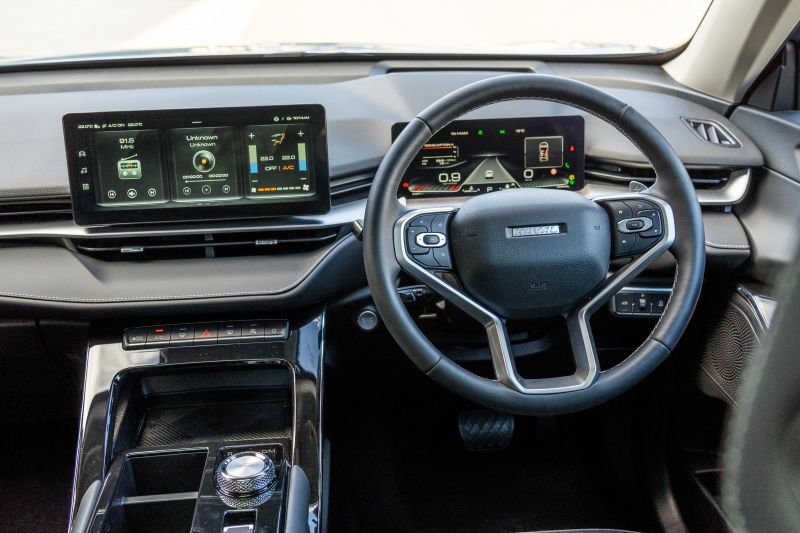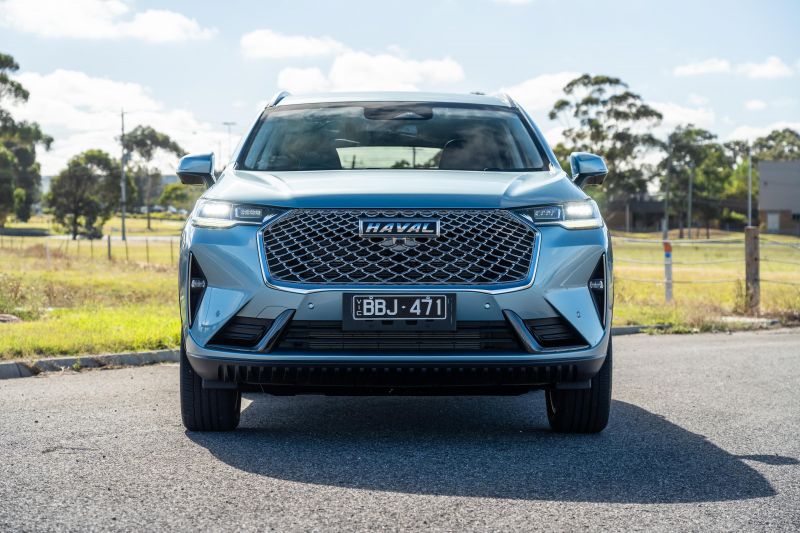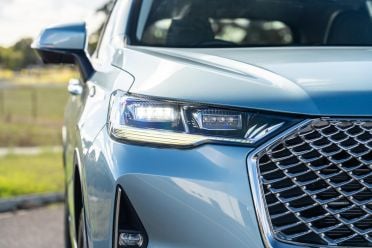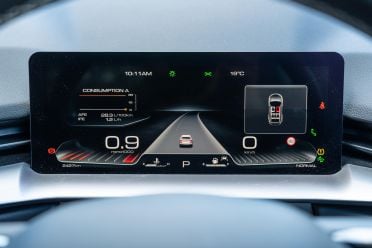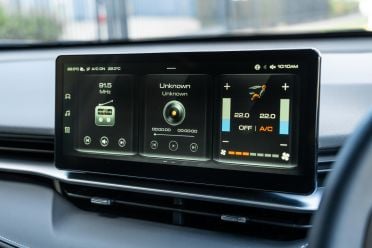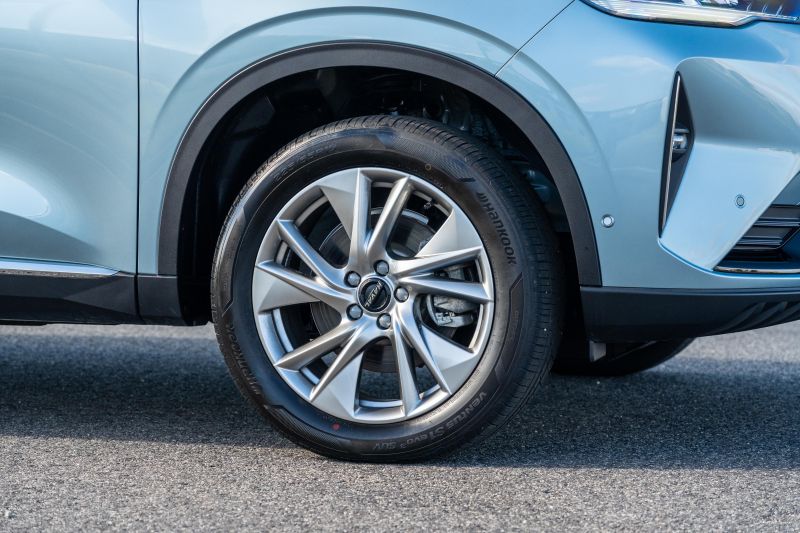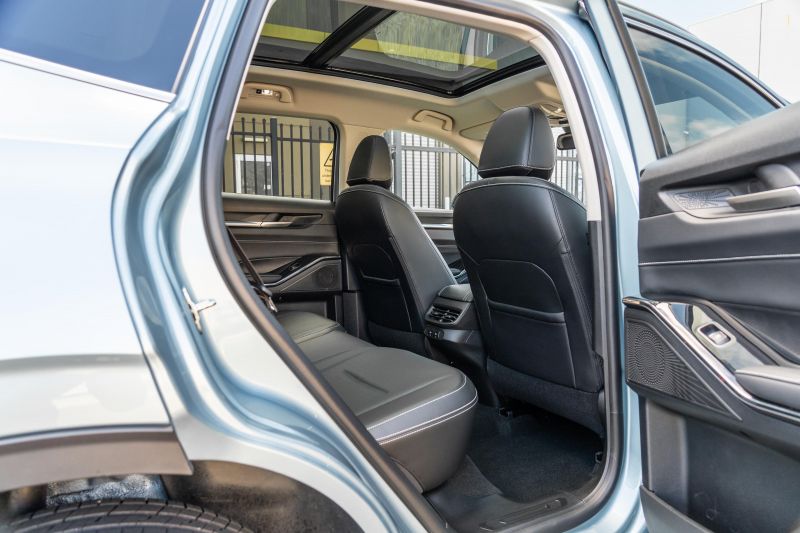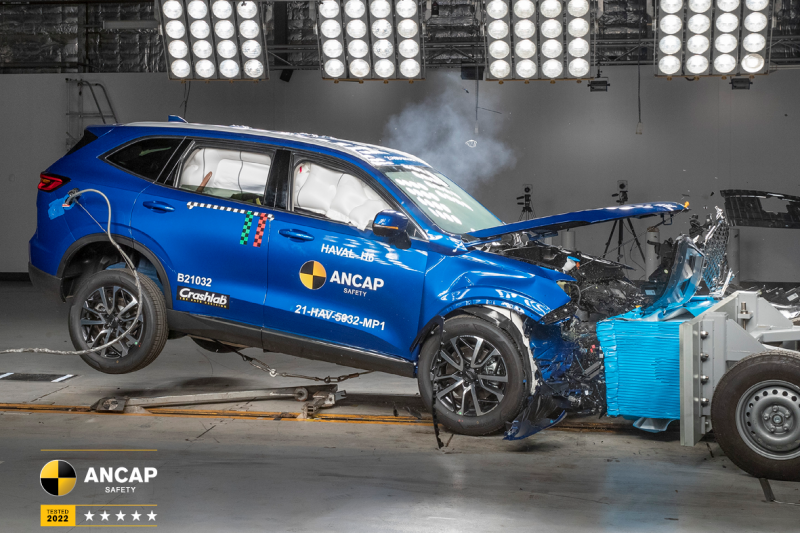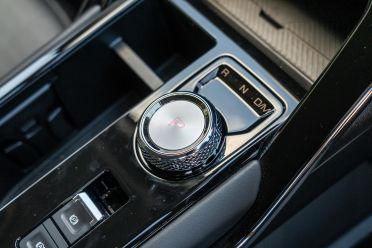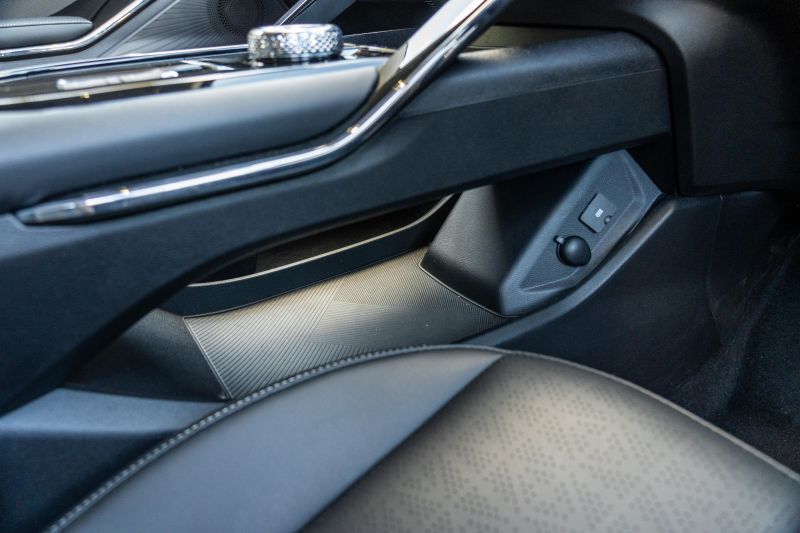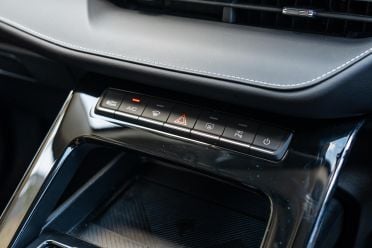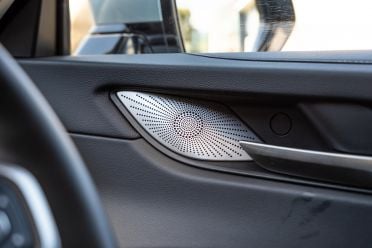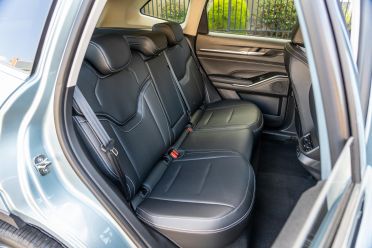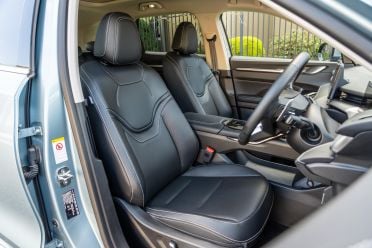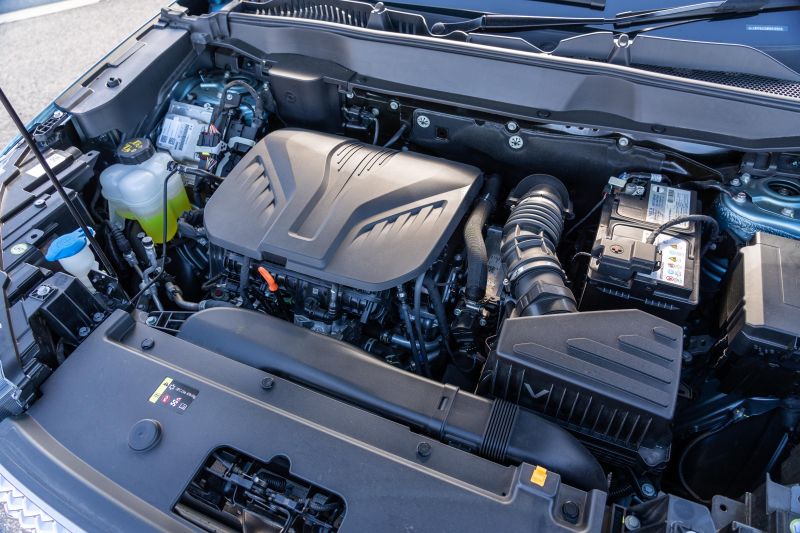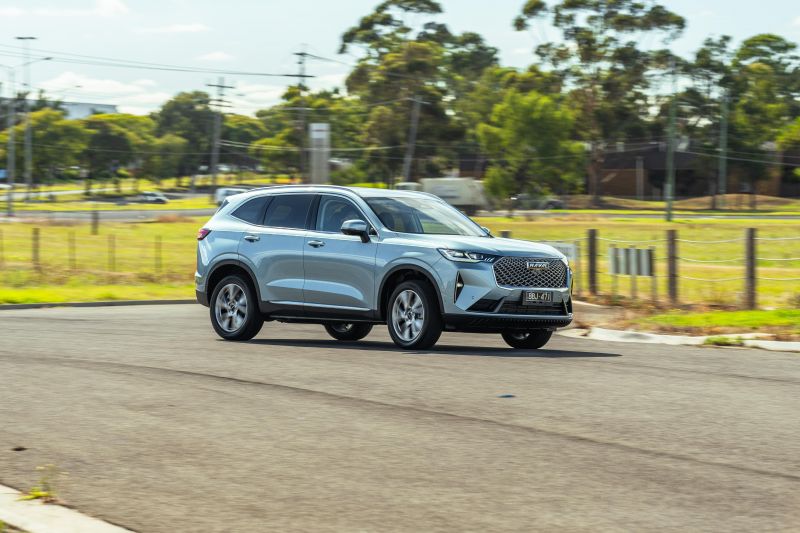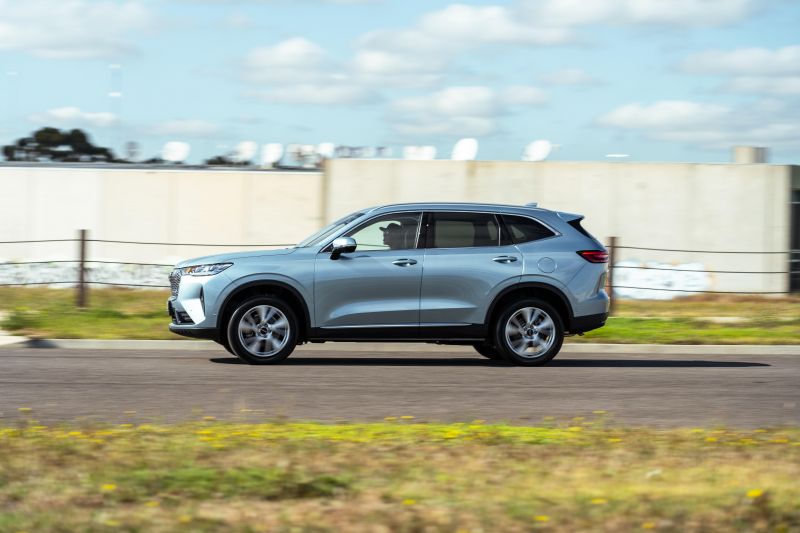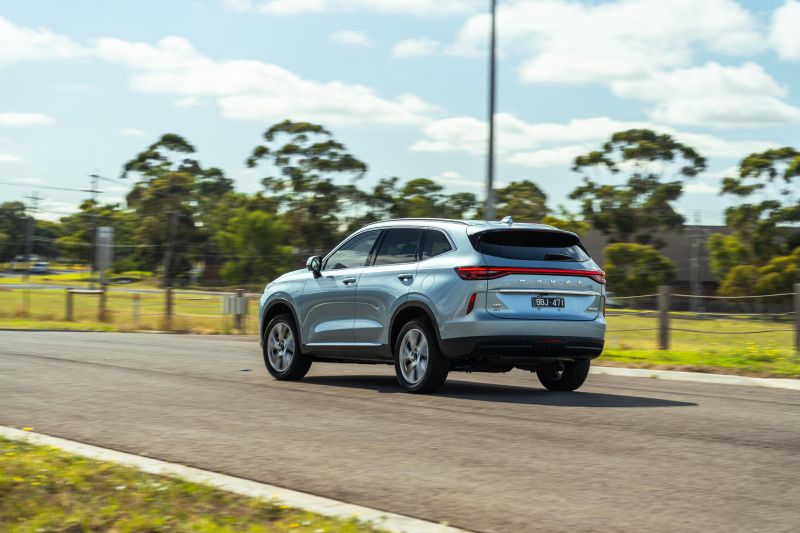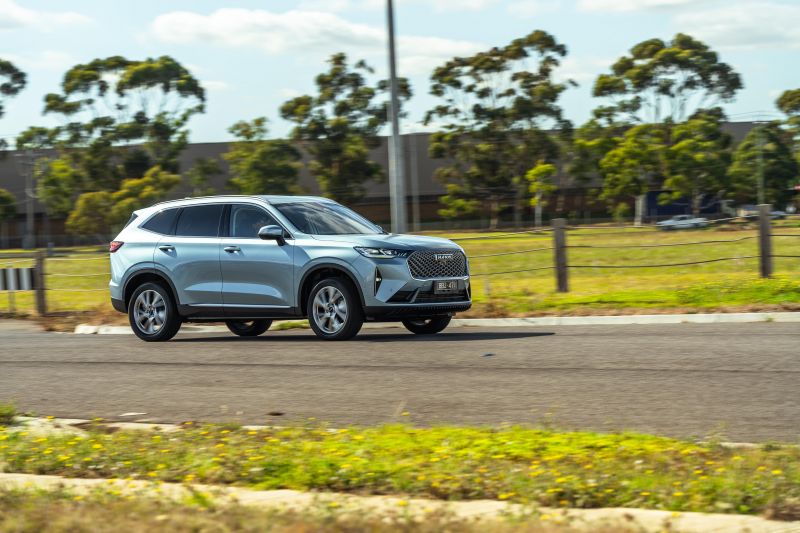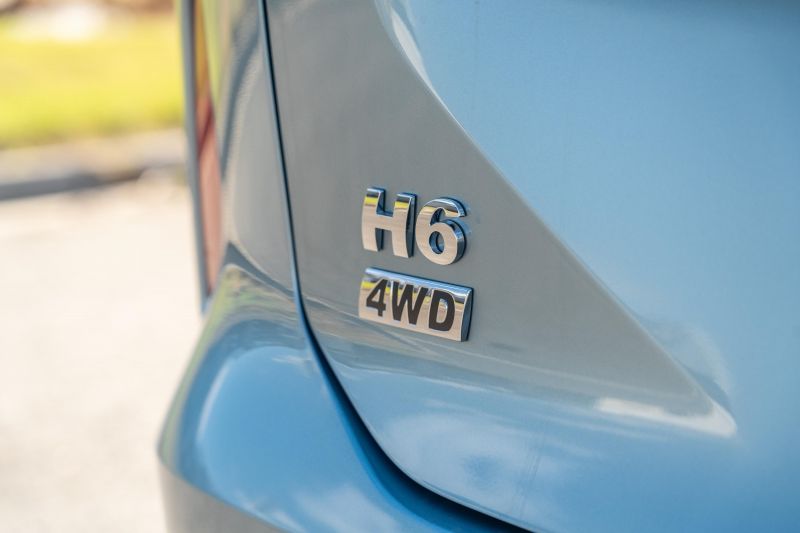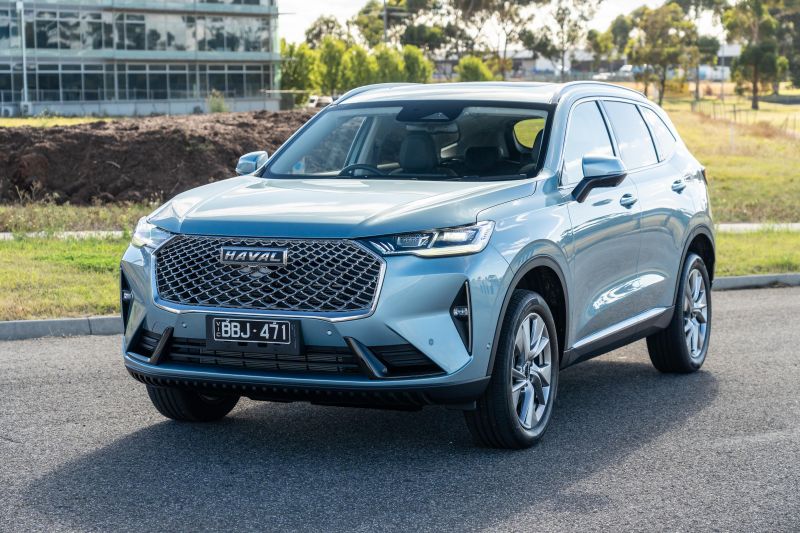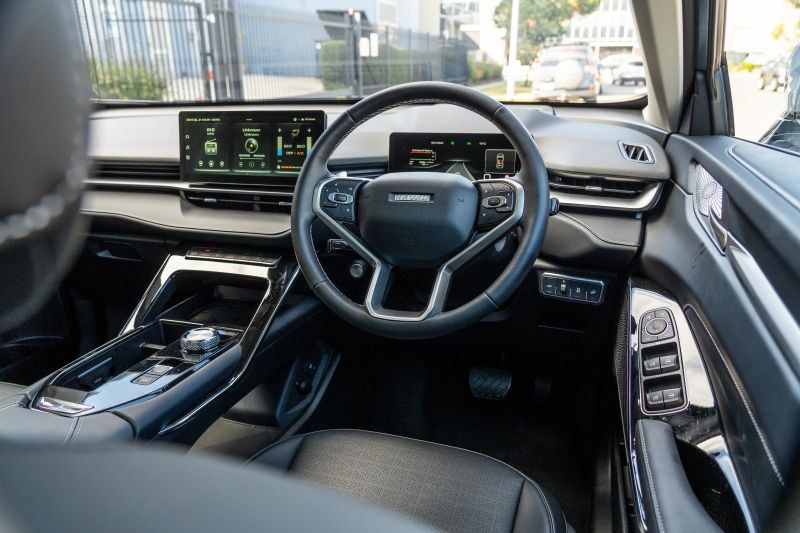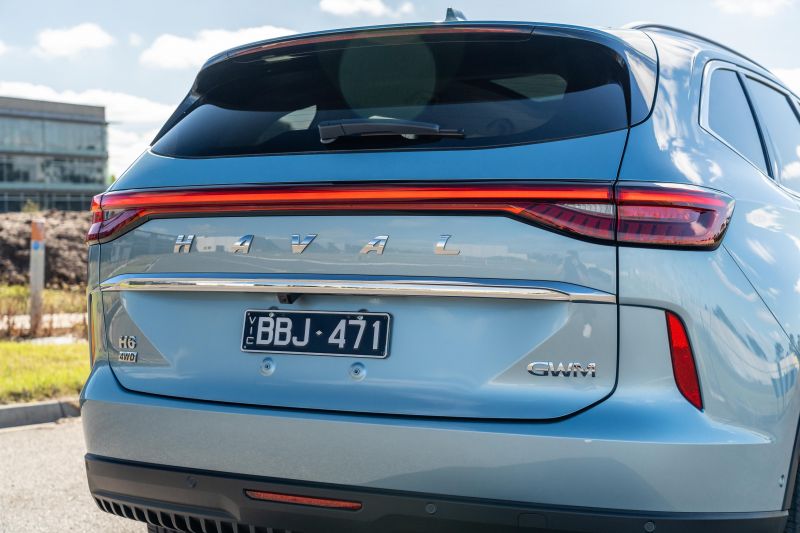Great Wall Motors’ Haval brand has been making significant inroads in the Australian market with its range of SUVs.
They’ve improved leaps and bounds from GWM’s past efforts, banishing memories of the old Great Wall X-Series with punchy engines, a long list of safety equipment, and keen pricing.
The mid-sized Haval H6, for example, starts at $32,990 drive-away. That’s cheaper than the before on-roads price of most rivals’ base models.
At that price point, the handsome new Chinese mid-sizer is hard to ignore. But what about at the opposite end of the range?
Our tester is the fully-loaded Ultra with the optional all-wheel drive system, the only H6 variant to offer it. Not that there’s much to pick this range-topper from the rest of the H6 range, all of which – limited-edition Vanta aside – wear a glitzy chrome grille.
To my eyes, it’s a handsome mid-sized SUV with presence. Haval’s design director is Phil Simmons, formerly studio director for Land Rover’s exterior design team, and vehicles like the Range Rover Velar and Evoque were designed under his watchful eye.
There’s a prominent side crease, a belt line that sweeps upward aft of the rear doors, and slim LED lighting elements front and rear including a full-width light bar that makes this crossover hard to miss at night.
The chrome grille is rather gaudy but count me as a fan, although I maintain the badging on Haval products is naff – the italicised wordmark is tacky, particularly at the front, and there’s really no need to have a ‘GWM’ logo at the back. You don’t see Skoda Karoqs with Volkswagen written on the tailgate.
Our tester was finished in ‘Energy Green’, more of a sky blue unless I have a very specific kind of colour-blindness. It’s a bit of a different shade for this segment, but hallelujah for something that’s not another shade of grey.

How much does the Haval H6 Ultra AWD cost?
Though our Ultra tester is the only H6 with all-wheel drive, its $41,990 drive-away price tag isn’t the highest in the range. That honour goes to the new H6 Hybrid, priced at $44,990 drive-away.
Nevertheless, the all-wheel drive Ultra is at the pointy end of the H6’s price range. It still manages to undercut its direct rival, the MG HS Essence X, which is priced at $42,990 drive-away, to say nothing of its Japanese, Korean and European rivals.
To get a similarly-equipped mid-sized SUV with all-wheel drive from a rival, you’re looking at the following prices:
- Ford Escape Vignale: $50,090
- Honda CR-V VTi-LX: $53,500 drive-away
- Hyundai Tucson Highlander 1.6T: $50,400
- Kia Sportage GT-Line 1.6T: $49,370
- Mazda CX-5 Akera 2.5T: $53,180
- Mitsubishi Outlander Exceed: $48,490
- Nissan X-Trail Ti: $46,115
- Renault Koleos Intens: $46,390
- Subaru Forester 2.5i-S: $44,190
- Toyota RAV4 Edge 2.5: $50,200
- Volkswagen Tiguan 162TSI Elegance: $52,990
All prices exclude on-road costs unless otherwise specified.
It’s plain as day: the top-spec H6 massively undercuts established rivals. That doesn’t necessarily mean it can entirely match some of its competitors in spec, however.
What do you get?
It’s easier to talk about what the H6 Ultra doesn’t have.
The lack of satellite navigation forces you to rely on Android Auto and Apple CarPlay – not ideal for those who do a lot of rural driving. There are also no heated seats in the rear, nor is there memory for either of the front seats.
There are LED headlights and fog lights with static cornering lights, though you won’t find any trick matrix or adaptive headlights here.
Otherwise, the H6 Ultra is kitted out to an impressive degree considering its price point.
H6 Ultra highlights:
- 19-inch alloy wheels
- 12.3-inch touchscreen infotainment system
- Head-up display
- Rear cross-traffic alert
- Semi-autonomous parking assist
- Ambient lighting
- Power tailgate
- Panoramic sunroof
- Heated and ventilated front seats
- Heated steering wheel
- Wireless phone charging
- Four-way power passenger’s seat
That’s over and above equipment found in lesser H6 variants, including:
- 10.25-inch digital instrument cluster
- Apple CarPlay and Android Auto (wired)
- LED headlights
- LED daytime running lights
- LED fog lights and tail lights
- Keyless entry and start
- Dual-zone climate control
- Rear privacy glass
- Tyre pressure monitoring
- Leather-wrapped steering wheel
- Black leatherette upholstery
Is the Haval H6 Ultra AWD safe?
Safety authority ANCAP recently tested the Haval H6 and awarded it five stars under its current testing protocols.
It received scores of 90 per cent for adult occupant protection, 88 per cent for child occupant protection, 73 per cent for vulnerable road user protection, and 81 per cent for safety assist.
The H6 Ultra comes standard with:
- AEB with pedestrian/cyclist/junction assist
- Lane-keep assist
- Lane-centring assist
- Lane departure warning
- Blind-spot monitoring
- Rear cross-traffic assist
- Driver attention monitoring
- Traffic sign recognition
- Safe exit warnings
- Adaptive cruise control with stop/go
- Traffic jam assist
- Front and rear parking sensors
- Surround-view cameras
- 7 airbags incl. a front-centre airbag
That’s a pretty full complement of safety equipment, even for a flagship mid-sized SUV.
Of particular note is the presence of rear cross-traffic assist, which will apply the brakes if it detects you’re about to reverse into the path of an oncoming vehicle. This is still a fairly uncommon feature for the segment, though you’ll find it in the likes of the Hyundai Tucson and Kia Sportage.
What is the Haval H6 Ultra AWD like on the inside?
Open the door and you’re greeted with a neat, uncluttered cabin. This is both the H6 interior’s strongest suit and its greatest weakness.
You’ll note the complete absence of physical climate controls, with just a single row of switchgear on the centre stack below a large touchscreen.
Haval has shifted almost every function to the touchscreen. You can press a physical button to turn the air-conditioning on or off, but to adjust fan speed or temperature you’ll need to use the touchscreen.
Peugeot has a similar approach to climate control adjustment, but it at least employs shortcut buttons on the touchscreen. Haval does no such thing, so if you’re using Apple CarPlay or Android Auto – both of which display in full-screen – you have to exit the application to return to the main menu and adjust the settings accordingly.
Once you’re finally in the climate menu, Haval doesn’t make things any easier. Despite the slick-looking interface, the H6’s touchscreen can be annoyingly laggy, particularly if you’re swiping the screen to get to the second page of the menu.
The climate menu requires you to press plus or minus signs or swipe up or down on a temperature bar. This is awkward on the move and on a couple of occasions I inexplicably found myself feeling hot, only to look at the climate menu and find I’d changed my zone to 28 degrees.
Even the act of adjusting your heated and ventilated seat controls is a chore, considering this is literally one button press in most cars. And frankly, the weak ventilated seats are barely worth it.
While the touchscreen’s usability may fall short of rivals, the resolution of the H6’s camera displays is astonishingly good for this price point. You can toggle between crisp 2D and 3D views and swipe around the vehicle. It’s all rather BMW-like, and puts some luxury brands’ camera systems to shame.
The digital instrument cluster looks fresh and modern, and like the head-up display it can be used to display turn-by-turn directions from your smartphone.
The H6 flubs some little details, hindering useability. The USB-A outlet for smartphone mirroring is on the passenger side of the centre console, for example, while the handbrake and auto hold buttons don’t have lights in them and there’s no lock button inside the power tailgate.
The overall layout of the interior, however, is genuinely interesting. At the base of the minimalist centre stack you’ll find a wireless charging pad, while below the ‘floating’ centre console you’ll find a large, flat storage area.
More storage can be found in the front doors, which feature cutouts large enough to accommodate a 1L bottle.
The centre console bin is well-sized and opens with the press of a button, while the stitching details found here and on the dash lend the H6’s interior a premium touch.
The paddle shifters have a metallic look to them and don’t feel flimsy, while the dial shifter for the transmission is acceptably tactile. The metallic sunburst elements on the doors are a bit naff, though.
The H6’s cabin can’t match the almost vault-like solidity and premium polish of a CX-5, but it’s arguably better built inside than the new Outlander. Let’s see how it holds up with time.
Soft-touch materials are used on all but the lower reaches of the dashboard and front doors, while the rear doors are finished in hard plastic but still have leatherette inserts.
The main ‘tier’ of the dashboard has a leatherette look to it, but transitions from being soft to the touch on one side and hard on the other without looking like it uses two different materials.
The H6’s cabin is all screwed together quite well, with everything feeling quite solid and nothing standing out as being glaringly cheap – with one exception. Unfortunately, that item is something you’ll touch every time you get in the H6: the steering wheel.
It looks alright, until you realise how thin it looks and feels. There’s also a hole at the bottom, inside which you can feel what appears to be an exposed screw.
The front seats are cushy, seemingly a hallmark of Chinese brands. The sound system is less impressive – it’s average at best.
The back seat is a comfortable place to sit. There’s plenty of room in every dimension – at 180cm tall, I could even sit in the middle seat and have headroom to spare despite the presence of a panoramic sunroof.
There’s ample legroom behind my driving position, and the floor is nice and flat.
In terms of amenities, there are two USB-A outlets, a fold-down armrest with two cupholders, and rear air vents. The storage cutouts in the doors, however, aren’t great as they lack a proper cutout for bottles like in most rivals.
Child seats can be positioned using one of the three top-tether anchor points or the ISOFIX anchor points on each outboard seat.
With the rear seats upright, the H6 has a boot capacity of 600L – one of the larger in the class. This expands to 1485L with the rear seats folded down.
Under the boot floor you’ll find a space-saver spare, while on either side of the main boot floor you’ll find two open cubbies for storage. There’s also a 12V outlet.
What’s under the bonnet?
The H6 differs from most of its rivals in offering a larger turbocharged four-cylinder engine from the base grade up.
Its turbocharged 2.0-litre four pumps out 150kW of power and 320Nm of torque, down on the turbocharged 2.0-litre engines in the Escape (183kW/387Nm), Tiguan (162kW/350Nm), CX-5 (170kW/420Nm) and HS (168kW/360Nm) but easily besting most similarly-priced rivals, many of which lack turbocharging.
As in the front-wheel drive model, the all-wheel drive H6 Ultra uses a seven-speed dual-clutch transmission.
Over a mix of inner-city, suburban and highway driving, albeit dealing with Melbourne traffic, we averaged 12.7L/100km. On a road trip to Shepparton and back, a circa-400km round trip involving mostly highway driving, we averaged 8.5L/100km. Suffice it to say, Haval’s claim of 8.3L/100km on the combined cycle is ambitious.
How does the Haval H6 Ultra AWD drive?
When it comes to dynamics, the H6 won’t give the likes of the Mazda CX-5 and Volkswagen Tiguan pause. But it stacks up admirably when compared to less dynamic fare in this segment like the MG HS, Mitsubishi Outlander and Nissan X-Trail.
Tare mass is up only 70kg on the front-wheel drive model at 1625kg, so the H6’s turbocharged four remains untaxed. The all-wheel drive system also removes the front-wheel drive models’ excessive wheelspin, allowing you to take off with medium-to-heavy throttle application without chirping the front tyres.
The punchy engine pairs well with the transmission, which affords the typically rapid shifts of a dual-clutch unit. Alas, the typical drawbacks of a DCT are present and accounted for.
Creeping through heavy traffic results in a somewhat jerky feeling from the transmission, while there’s an annoying delay off the line. It’s a shame as this transmission is otherwise well-calibrated.
Be sure you don’t twist the shifter dial too much, or you may accidentally end up in manual mode and wonder why you’re revving the snot out of the car in first gear.
The turbocharged engine isn’t the most powerful or economical of its ilk but there’s no shortage of power, even with a carload of people and their stuff. It sounds generally quite raspy, while from the outside it has a bit of a rough idle.
Handling is benign. The H6, even with all-wheel drive, doesn’t beg you to push it down a winding road, but it’s broadly competent.
The steering has decent weighting, if not a great deal of feel. There are three different weightings to choose from: Light, Comfort and Sport. You can therefore adjust the weight independent of the drive mode, which is ideal – I generally left the steering in Sport and the drive mode in Normal.
Ride quality is good, for the most part, with most bumps and ruts absorbed quite well.
Where it needs a little more work is in body control. On undulating roads, the H6 can take a moment or two longer to settle compared to some rivals.
On the roughest, most corrugated roads we could throw it at, the H6 struggled to absorb the impacts. However, on the usual pockmarked pavement you’ll find on rural and urban roads, its ride quality is generally quite good.
There’s a bit of tyre roar on coarse-chip roads, but wind noise is kept to a minimum even at highway speeds.
The adaptive cruise control slows the vehicle a bit too much for even the gentlest of highway curves. This has been a known issue with the H6’s system, with Haval dealerships deploying an update for customers’ cars upon request.
The cruise control stalk also takes a little getting used to. I personally prefer the steering wheel-mounted buttons of most rivals.
You can toggle between lane departure warning, lane-keep assist, and a lane centring function, though again you have to go diving through sub-menus on the central touchscreen due to the lack of physical switches on the dash or steering wheel.
The lane-keep assist is a bit overconfident on single-lane, semi-sealed rural roads but generally works quite well, while the lane centring works excellently on highways but is too overbearing for urban use.
Should you venture off the beaten track, the H6 Ultra fares better than many rivals. It features an intelligent on-demand all-wheel drive system with an up to 50:50 split across both axles. There are also dedicated off-road drive modes.
We found it tackled our log-covered hill with aplomb – we could stop the H6 halfway up and get going again with ease, where many mid-sized SUVs would simply spin their rear wheels and ultimately go nowhere.
Don’t go thinking you’ve got a bush basher on your hands, though. Ground clearance is 172mm, low for the segment.
How much does the Haval H6 Ultra AWD cost to run?
GWM Haval backs the H6 with a seven-year, unlimited-kilometre warranty with five years of roadside assist.
It offers capped-price servicing for the first five visits. The first is required at 12 months or 10,000km, while subsequent intervals are 12 months or 15,000km.
The all-wheel drive Ultra is slightly more expensive to service than the rest of the range, with the first five services capped at $210, $280, $480, $580 and $210. That’s $200 more over the course of five years, and yet still below the MG HS ($2056).
Some rivals are more affordable yet – the Mitsubishi Outlander’s first five services are $199 each, the Toyota RAV4’s $230 – but the H6 is in the same ballpark as the likes of the Nissan X-Trail ($1642 over five years) and the Hyundai Tucson ($1875).
CarExpert’s Take on the Haval H6 Ultra AWD
Stepping up through the Haval H6 range isn’t a case of diminishing returns.
Even in all-wheel drive Ultra guise, the H6 makes a compelling value play against established rivals.
It costs thousands less than comparably-specified competitors, while offering a decently powerful engine for the price point and commendable off-road ability for a mid-sized crossover.
All the H6’s strong suits are present in this up-spec grade, including a long list of standard equipment, a spacious and attractive cabin, and a long warranty.
The all-wheel drive system also helps power get to the ground more effectively, and affords the H6 a decent amount of off-road ability for a soft-roader.
The H6’s foibles remain in the Ultra, including a chintzy steering wheel, no embedded satellite navigation, and controls buried in touchscreen sub-menus.
There are also the usual reasons that may give buyers pause: Haval being a relatively new brand in Australia, for one, and general unease about buying Chinese.
Now that it can boast a five-star ANCAP rating, however, there are fewer reasons not to put the H6 on your shortlist.
Click the images for the full gallery
MORE: Everything Haval H6





